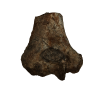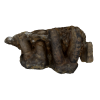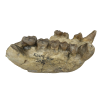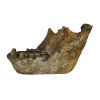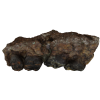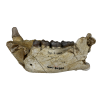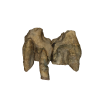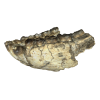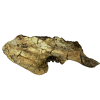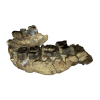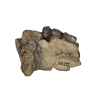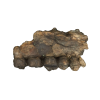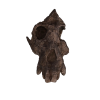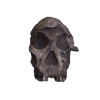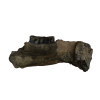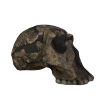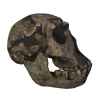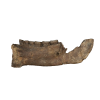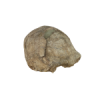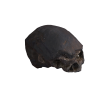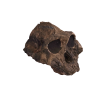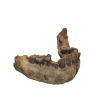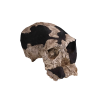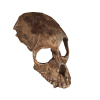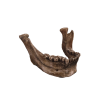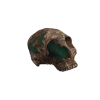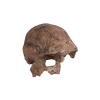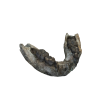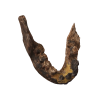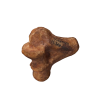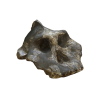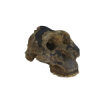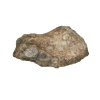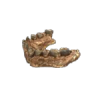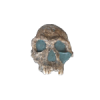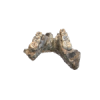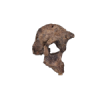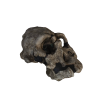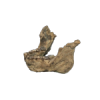This mandible belongs to the 1.6 million year old skeleton of Homo erectus found at Nariokotome on the west side of Lake Turkana, sometimes referred to as the “Turkana Boy” or the “Nariokotome Boy”.
If you look at the right hand side of the mandible, you can see that there is a large hole in the lower jaw just below the first molar. This hole is evidence of a large abcess that never healed and must have been very painful for this individual. Also note that the lower M2 is just in wear, but the lower M3 is not yet erupted. If Homo erectus grew up like a modern human, the Turkana Boy would have been about 12 years old. However studies of tooth development suggest that Homo erectus grew up more quickly than modern humans and the Turkana Boy was likely to have been 8 years old when he died.
The discovery of the skeleton was made by Kamoya Kimeu, on a Sunday morning in August 1984. He was walking up a gentle slope on the southern side of the seasonal Nariokotome River when he spotted a matchbox sized skull fragment, which he recognized as belonging to a human ancestor. No one could have imagined that such a complete specimen would be recovered.



